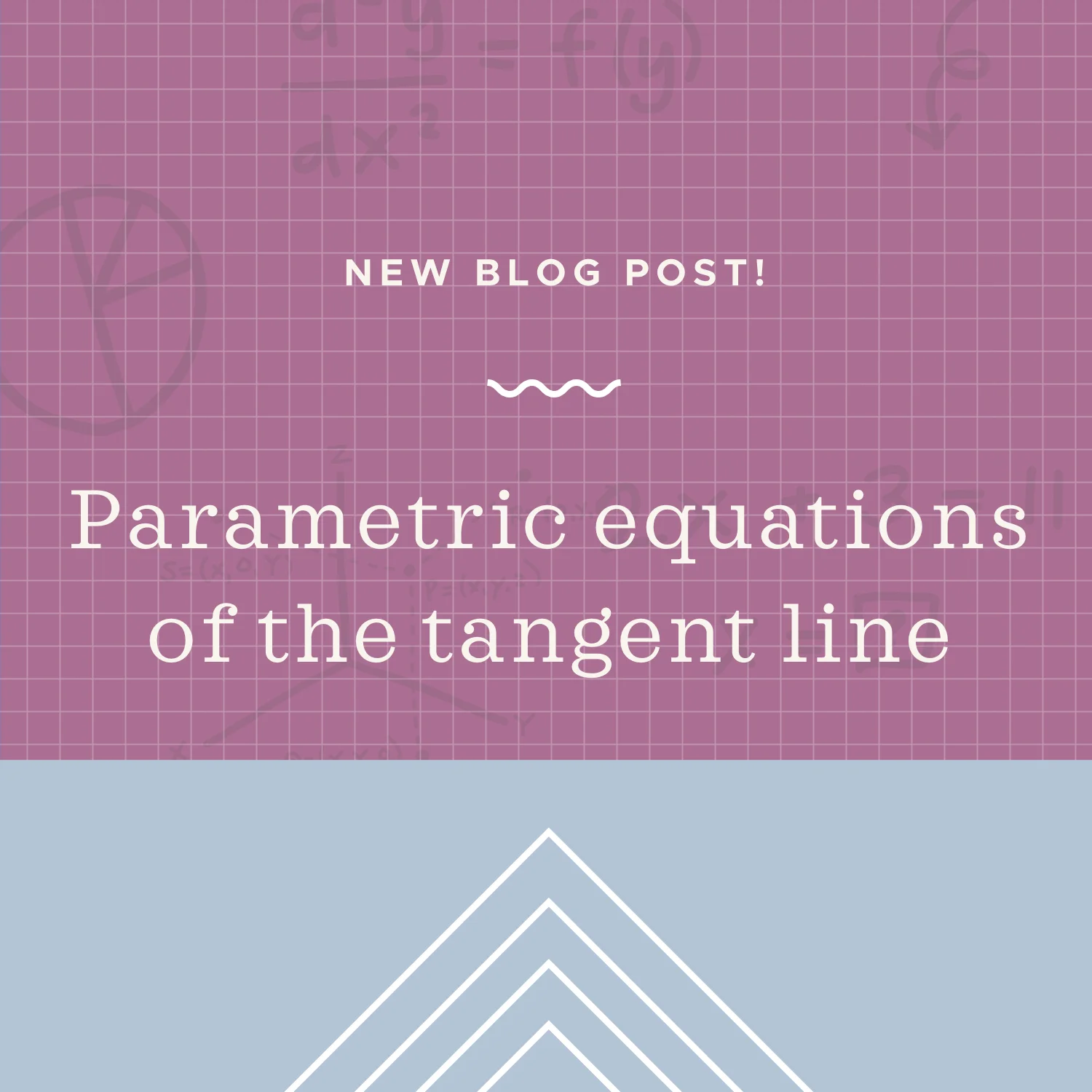Like cartesian (or rectangular) coordinates and polar coordinates, spherical coordinates are just another way to describe points in three-dimensional space. Rectangular coordinates are given as (x,y,z), where x is the distance from the origin along the x-axis, y is the distance from the origin along the y-axis, and z is the distance from the origin along the z-axis. Spherical coordinates are given as (rho,theta,phi), where rho is the distance from the origin, theta is the angle to the positive direction of the x-axis, and phi is the angle to the positive direction of the z-axis.
Read MoreThe parametric equations of the tangent line of a vector function r(t)=[{r(t)_1,r(t)_2,r(t)_3] are x=x_1+r'(t_0)_1t, y=y_1+r'(t_0)_2t. and z=z_1+r'(t_0)_3t.
Read MoreWhen we reparametrize a curve, it means that we rewrite it in terms of an independent variable. There’s not a specific variable that’s always used in reparametrization, but it’s common to see s used.
Read MoreIn order to find global extrema of the function which is defined for a specific set of points, we’ll follow 9 specific steps. This will allow us to find the absolute maximum and absolute minimum points of a particular region.
Read MoreWe can estimate the average value of a region of level curves by using the formula (1/A(R)) int int_R f(x,y) Delta(A), where A(R) is the area of the rectangle defined by R=[x1,x2]x[y1,y2], and where the double integral gives the volume under the surface f(x,y) over the region R.
Read MoreTo change an iterated integral to polar coordinates we’ll need to convert the function itself, the limits of integration, and the differential. To change the function and limits of integration from rectangular coordinates to polar coordinates, we’ll use the conversion formulas x=rcos(theta), y=rsin(theta), and r^2=x^2+y^2. Remember also that when you convert dA or dy dx to polar coordinates, it converts as dA=dy dx=r dr dtheta.
Read MoreTo sketch the area of integration of a double polar integral, you’ll need to analyze the function and evaluate both sets of limits separately. Remember, you’ll need to sketch the polar function on polar coordinate axes, where the r values represent the radius of a circle and the theta values will produce straight lines.
Read MoreYou can use a double integral to find the area inside a polar curve. Assuming the function itself and the limits of integration are already in polar form, you’ll be able to evaluate the iterated integral directly. Otherwise, if either the function and/or the limits of integration are in rectangular form, you’ll need to convert to polar before you evaluate.
Read MoreIn the past we’ve converted multivariable functions defined in terms of cartesian coordinates x and y into functions defined in terms of polar coordinates r and theta. Similarly, given a region defined in the uv-plane, we can use a Jacobian transformation to redefine it in the xy-plane, or vice versa.
Read MoreWhen we want to find the combination of two vectors, we take just match up the initial point of the second vector with the terminal point of the first vector, and then we draw a new third vector from the initial point of the first to the terminal point of the second.
Read MoreIn this lesson we’ll look at the formulas that we use to find the direction cosines and direction angles of a vector. In the formulas, D_a represents the vector length. The direction angles are found by taking arccos of both sides of the direction cosine formulas.
Read MoreIn this lesson we’ll look at the scalar projection of one vector onto another (also called the component of one vector along another), and then we’ll look at the vector projection of one vector onto another. We’ll follow a very specific set of steps in order to find the scalar and vector projections of one vector onto another.
Read MoreTo take the cross product of two vectors (a1,a2,a3) and (b1,b2,b3), we’ll set up a 3x3 matrix with i, j, and k across the first row, the components from vector a across the second row, and the components from vector b across the third row. Then we’ll evaluate the 3x3 matrix by breaking it down into determinants.
Read MoreTo find the vector orthogonal to a plane, we need to start with two vectors that lie in the plane. Sometimes our problem will give us these vectors, in which case we can use them to find the orthogonal vector. Other times, we’ll only be given three points in the plane.
Read MoreIf we need to find the volume of a parallelepiped and we’re given three vectors, all we have to do is find the scalar triple product of the three vectors |a•(b x c)|, where the given vectors are (a1,a2,a3), (b1,b2,b3), and (c1,c2,c3). b x c is the cross product of b and c, and we’ll find it using the 3 x 3 matrix.
Read MoreIf we need to find the volume of a parallelepiped and we’re given three adjacent edges of it, all we have to do is find the scalar triple product of the three vectors that define the edges.
Read MoreThe scalar triple product |a•(b x c)| of three vectors a, b, and c will be equal to 0 when the vectors are coplanar, which means that the vectors all lie in the same plane.
Read MoreTo find the limit of a vector function, we’ll need to take the limit of each term separately. So we’ll apply the limit to each component of the vector function, and then evaluate each limit.
Read MoreTo find the derivative of a vector function, we just need to find the derivatives of the coefficients when the vector function is in the form r(t)=(r(t)1)i+(r(t)2)j+(r(t)3)k. The derivative function will be in the same form, just with the derivatives of each coefficient replacing the coefficients themselves.
Read MoreTo find the integral of a vector function r(t)=(r(t)1)i+(r(t)2)j+(r(t)3)k, we simply replace each coefficient with its integral. In other words, the integral of the vector function comes in the same form, just with each coefficient replaced by its own integral.
Read More





















